As a web developer, your priorities are to build, design, optimize, and host the best site you can — in the least possible amount of time. Today, we want to look at Django vs WordPress and see which platform better fits your needs.
You could be working for a client or trying to sell a brand new site. No matter what you’re doing, though, with all the brand new technologies out there, you might think: What do I choose to build my next big project?
Like with most web development technologies, there isn’t a clear answer. So, you must pick the best set of tools depending on the site requirements.
By the end of this article, you’ll clearly understand the key similarities and differences between Django vs WordPress and which one to choose for your needs.
Why Compare Django vs WordPress?
Before starting with the comparison, it’s essential to know these two technologies, their main features, and their use cases.
What Is Django?
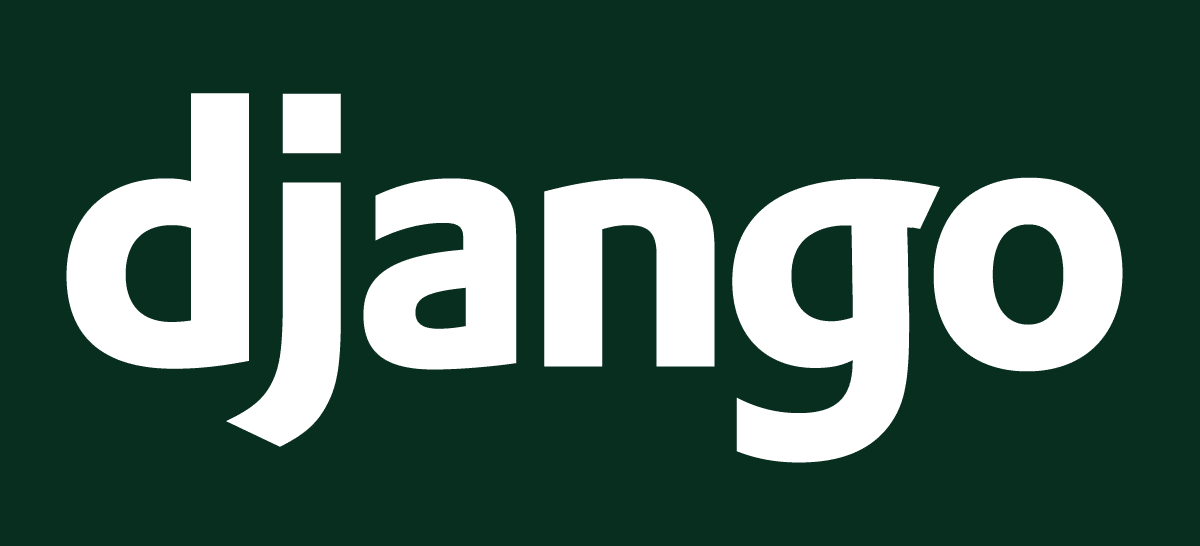
Django is a robust backend web framework that includes all the tools you’d need to build a dynamic website without reinventing the wheel.
It’s an open source project first introduced in 2005 as a Python solution to build a newsletter site. Django is the most-used Python library for web development, with almost 7 million downloads per month.
To use Django, you must know core concepts of programming and strong fundamentals of Python object-oriented programming (OOP). Therefore, getting started with Django is not as easy as building your first site with WordPress.
Django Key Features
Some of the main Django features are:
- Open-source: It’s a free and open-source web framework. Anyone can use it to build web applications.
- Extensible: With Django, you get all the power of the pip package manager, so you can install any available Django app or package (for instance, you can install the Django REST framework to build REST APIs).
- Batteries included: Includes all the functionality needed to build a complex web application. From models and migrations to views and templates, you can create database schemas, model user interactivity, and design a beautiful UI.
- Security: Django is one of the most secure web frameworks out there. It provides built-in authentication and solutions to most common security mistakes, including SQL injection, CSRF attacks, and cross-site forgery.
- Scalable: Although some people believe that Django isn’t scalable, this is far from the truth. Django is behind some of the fastest-growing and most visited sites worldwide.
- Rapid development: Developers can build applications from scratch extremely quickly.
- Don’t repeat yourself (DRY) approach: Django encourages this software design principle by avoiding code redundancy as much as possible.
Uses of Django
Django is incredibly versatile, which means you can build almost any web app you could imagine. Here are some of the common usages of this framework:
- Build backend APIs
- CRUD (create, read, update, and delete) operations — the base of any dynamic site
- Microservices
- Authentication management
- Scalable and reusable web apps
- Build your own content management system with Django or use a pre-existing one (for instance, Django CMS)
- Almost anything else — the only limitations are your imagination and technical skills.
Now you know some of the main characteristics of Django, it’s time to jump over to WordPress.
What Is WordPress?
WordPress is an open source content management system (CMS) written in PHP and used to build various websites rapidly.

The history of WordPress is fascinating, but rounding up, WordPress has been around since 2003, and it was initially designed to build blogs.
Nowadays, it’s backed by tons of contributors and one of the biggest communities on the internet. As a result, it has become a favorite option to build a website.
WordPress Key Features
Some of the key features of WordPress include:
- Free and open-source: Like Django, WordPress is free and open-source software, which means everyone can contribute to its source code.
- Versatility: Although WordPress is a CMS, you can build pretty much any website with it.
- Huge market share: Currently, WordPress is running over 40% of the internet.
- Extensibility: WordPress has a whole suite of free and paid plugins
- Easy to learn and maintain: Anyone can create and start managing their site in a matter of hours. The only thing you need to learn WordPress is time and resources.
- Built-in SEO capabilities: WordPress has built-in SEO tools, like auto-generation of title tags and meta descriptions. In case you need something heavier, you can incorporate external plugins like Yoast SEO.
- Multiple hosting options: You can decide between using WordPress.com or self-hosted options.
WordPress Usages
WordPress is a content management system whose primary purpose is to create, manage, and modify content. That said, its vast amount of plugins makes it capable of building much more than that, for example:
- Business websites
- Membership sites
- eCommerce stores
- Blogs (WordPress’ original purpose)
- Portfolios
- Resumes
- Forums
- Nonprofit sites
Django vs WordPress: An In-Depth Comparison
We’ve taken a look at the main characteristics of Django vs WordPress. Now, it’s time to dive into our comparison of these two.
Because they’re different technologies, some aspects may seem difficult to compare. However, we’ll give you the crucial information you need to decide the best option for you.
Backend Web Framework vs CMS
Django is a backend framework, while WordPress is a CMS. And as you may have guessed, they’re meant to accomplish different tasks.
A web framework is a set of tools built on top of a programming language that lets you build web applications from scratch. Most web frameworks like Django don’t provide ready-to-use content management tools as a CMS does; instead, you receive an API to custom-build whatever you want.
Compared to a CMS, web frameworks allow you to create more complex and custom features because you can create them with code. With a CMS, you have fewer options to create custom features if no plugin fits your needs.
For example, one of the CMSs can struggle with connecting to third-party APIs, or managing a highly complex authentication system.
Below is a table between the capabilities of a web framework vs a content management system when building a website.
| Web Framework | CMS |
|---|---|
| You need to know how to code to build a website. | You don’t need any specific knowledge to build a website. |
| Used to build web applications with complex requirements and custom features. | Used to build websites without complex requirements, taking advantage of various plugins. |
| The development of a site could last from weeks to months, depending on the requirements. | Easier and less time-consuming to launch a website due to its built-in tools. |
| It can be expensive if you need to hire developers to build a website. | Unless you’re using expensive plugins, it’s cheaper than using a web framework. |
| It’s often more scalable due to not being limited to the architecture of a particular CMS. | The only way to scale functionality is by using plugins or creating your own. |
Learning Curve
From a pragmatic point of view of Django vs WordPress, the former is much harder to learn and use than the latter. That’s because you need previous knowledge in:
- Basic programming concepts (variables, loops, functions)
- Python programming (keywords in Python, how it works, syntax)
- Terminal commands (Unix or Powershell)
- Object-oriented programming in Python
Aside from that, we recommend you play around with Django before launching your first live site. You can follow the official Django tutorial, which guides you through the creation of a poll app.
Also, if you plan to build a Django site on your own, you should know some frontend development. Basic HTML and CSS would be fine for your first site.
On the other hand, WordPress has a more friendly learning curve in which you can launch your first site within days. That’s is because you’re using a GUI (graphical user interface) instead of coding your site by hand.
If you want to get your site up and running fast, WordPress is a better option. But if you’re patient and want to learn web development on the go, you might instead opt for Django.
No matter which technology you choose, you can make a decent amount of money by using it. Both WordPress developers and web developers tend to thrive after learning the ins and outs of either CMS.
Who Is Using Each One?
Let’s discuss the popularity of the Django vs WordPress technologies with some of the most profitable companies worldwide.
Django Market Share
According to SimilarTech, there are up to 92,000 websites using Django as their main framework.

Although the number of Django websites has remained constant this year, the total traffic has increased dramatically. That’s a good sign of the scalability a Django project can achieve.
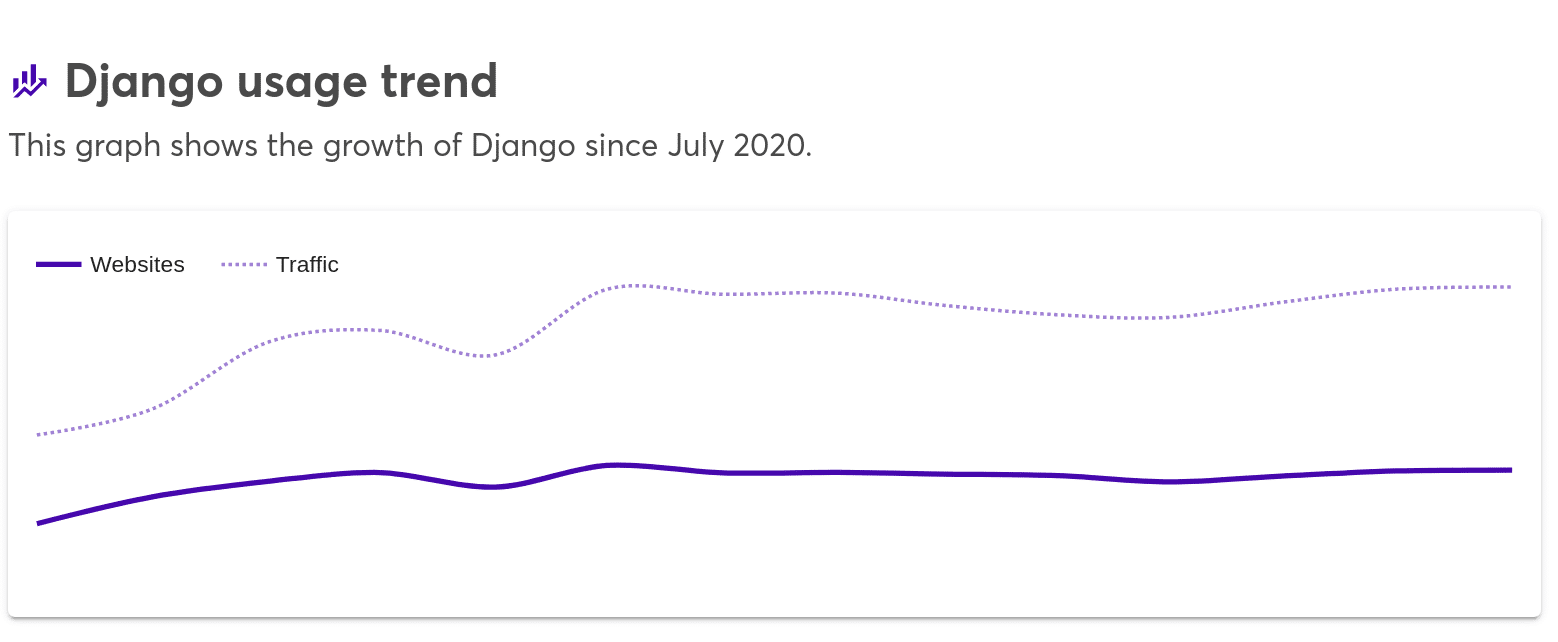
However, these stats don’t reflect the whole reality. One of the main usages of Django is microservices, and these kinds of tasks don’t show up in the overall reports.
Sites Using Django
Let’s see the most popular sites that are using Django.
Can you believe one of the most used social media worldwide started initially as a Django project?
To quote the Instagram engineering team on Instagram’s Django usage:
“Instagram currently features the world’s largest deployment of the Django web framework, which is written entirely in Python.”
Disqus
Disqus is the most used commentary system out there. It uses Django as its primary framework to handle over 45 thousand requests per second.
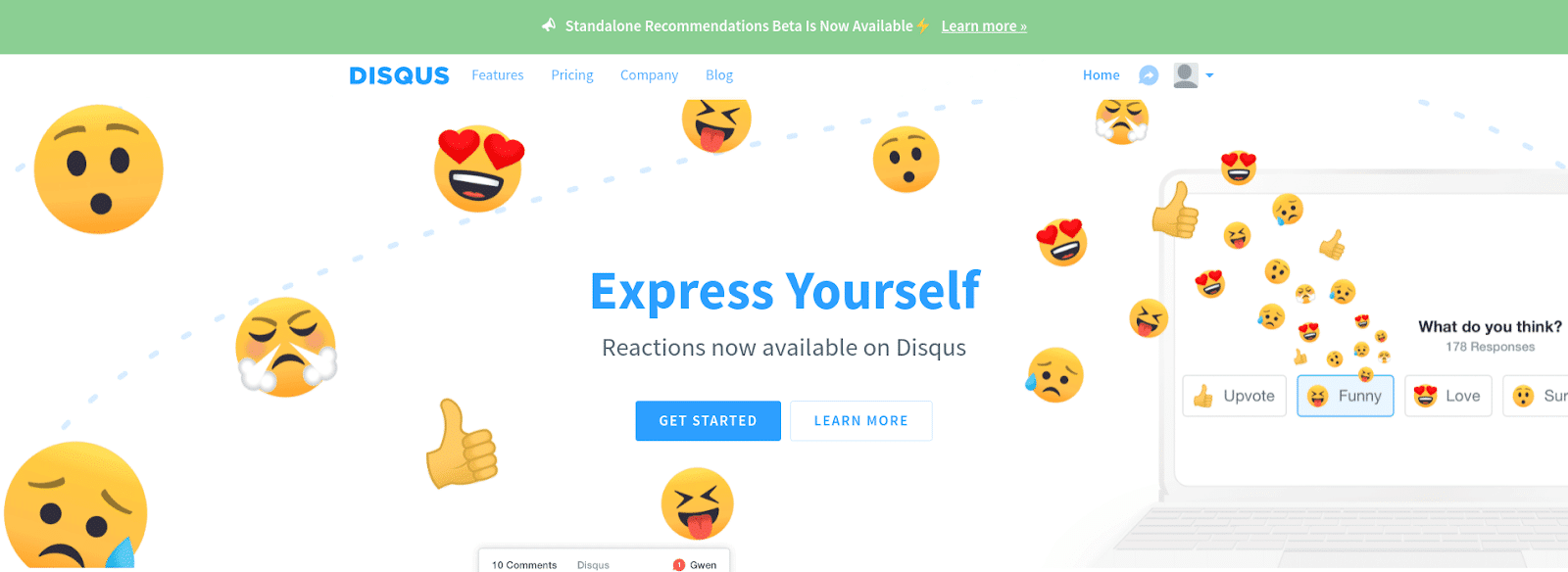
The Washington Post
Did you remember Django was initially designed to build a newspaper website?
Well, nowadays, this remains true. The Washington Post uses it, and so do The Onion and PBS.
NASA
NASA’s official website is built with Django, and it handles over 2 million views per month.
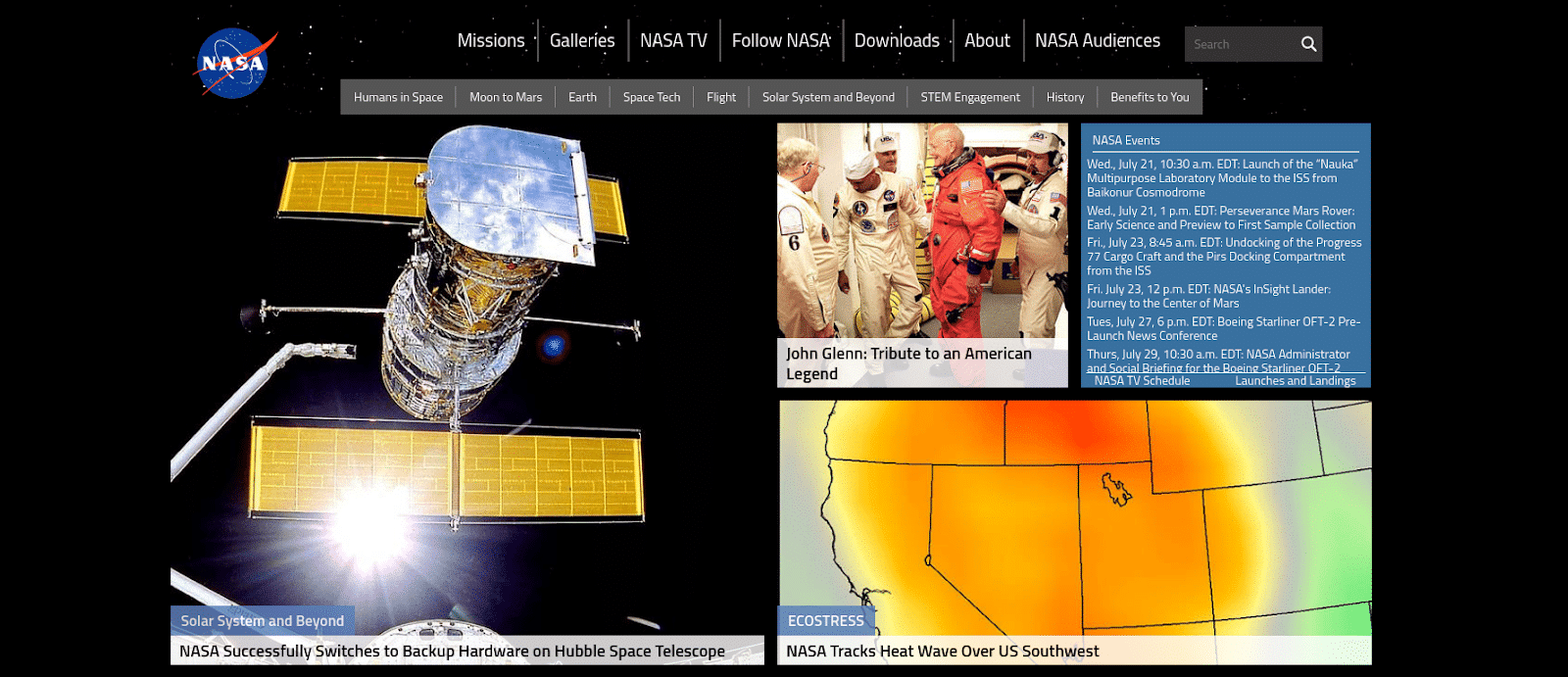
More Sites
Tons of popular websites use Django in some way, and we can’t end this list without mentioning the following:
- National Geographic
- Spotify
- Mozilla
- Eventbrite
- DropBox
- BitBucket
WordPress Market Share
It’s not impressive that WordPress runs a high number of websites taking into account it is the most used CMS in the world. However, it’s mind-blowing how WordPress is behind 40% percent of the web.
And this amount is likely to increase if we realize that more than 500 WordPress sites are being created each day.
Sites Using WordPress
With such high usability, it is feasible to think that some of the most visited sites use WordPress. Let’s see some of them.
Microsoft Blog
Microsoft’s official blog uses WordPress to manage content about its products and news.

The Rolling Stones
Even your favorite band is using WordPress to power their site!
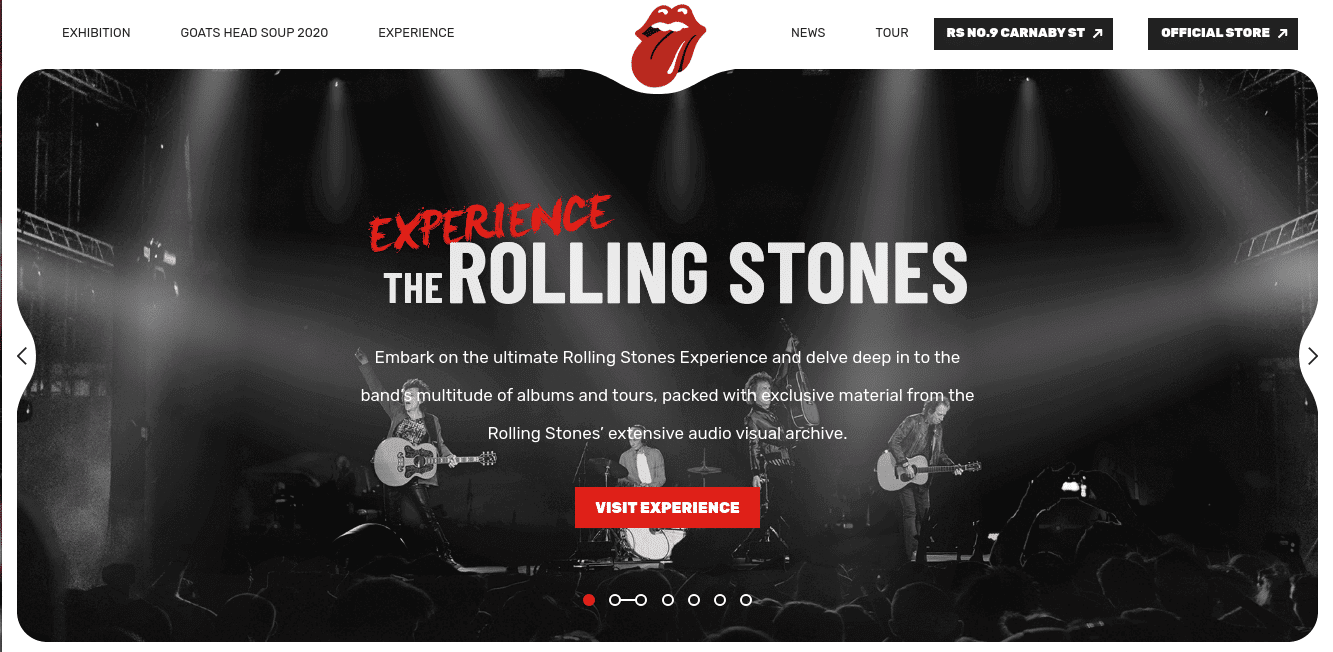
The Walt Disney Company
WordPress is powering The Walt Disney Company’s news site.

More Sites
To mention more famous sites using WordPress:
- TechCrunch
- Star Wars blog
- Sweden’s Official Website
- Rackspace blog
External Tools
These two technologies both have excellent extensibility capabilities.
On Django’s side, you have access to all the Python Package Index (PyPI), which means you can use tools and apps made by other people entirely for free.
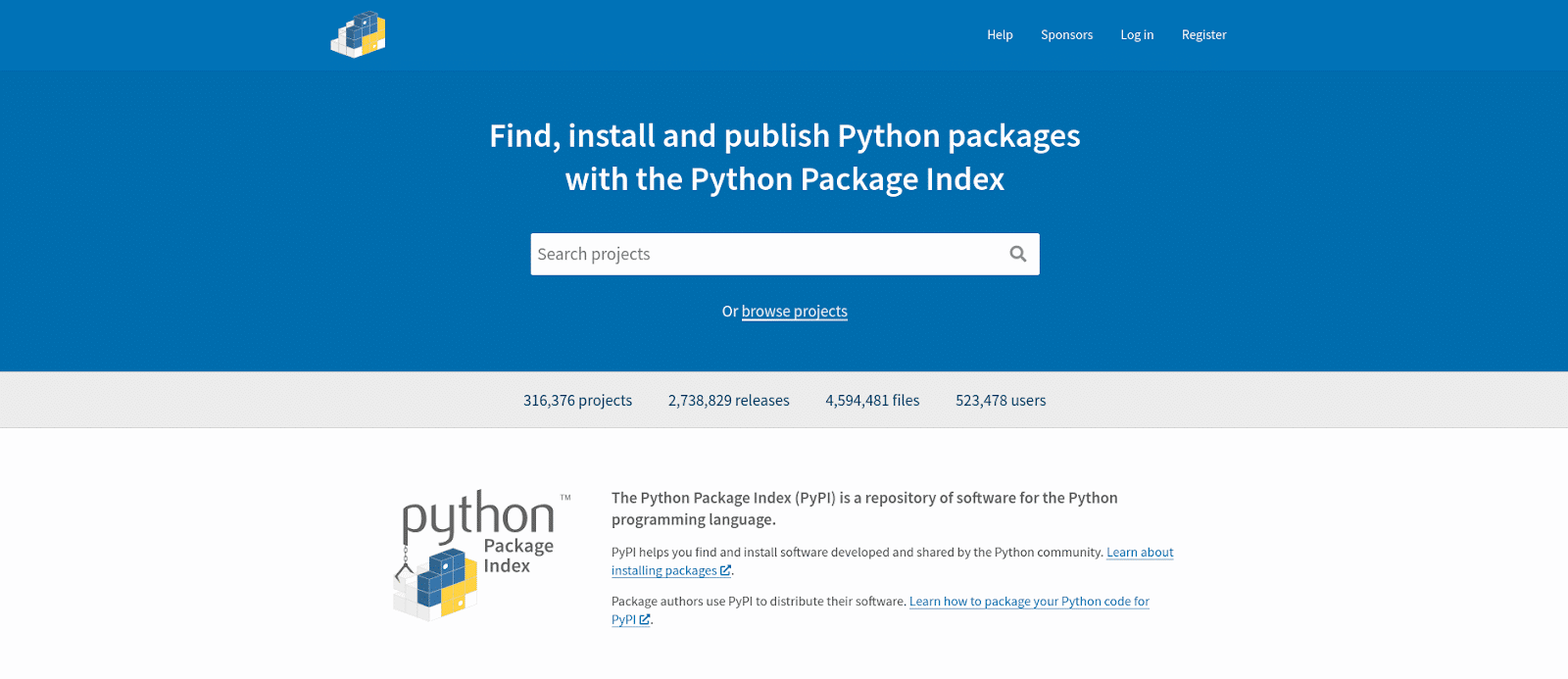
Some of the most used 3rd party packages for Django development are:
- Django REST framework: The most-used toolkit to build REST APIs with Django
- Django extensions: A set of tools for the daily work of a Django developer
- Whitenoise: Manage static file serving for Python web apps
- Django allauth: Solves the problem of integrating third-party authentications — such as for social media — into your project
For a deeper list of Django apps you can incorporate into your project, you can refer to Django Packages.
On the other hand, WordPress has a whole market of third-party plugins and development suites. If we only counted the free plugins listed at WordPress.org, we would have access to over 58,000 options.
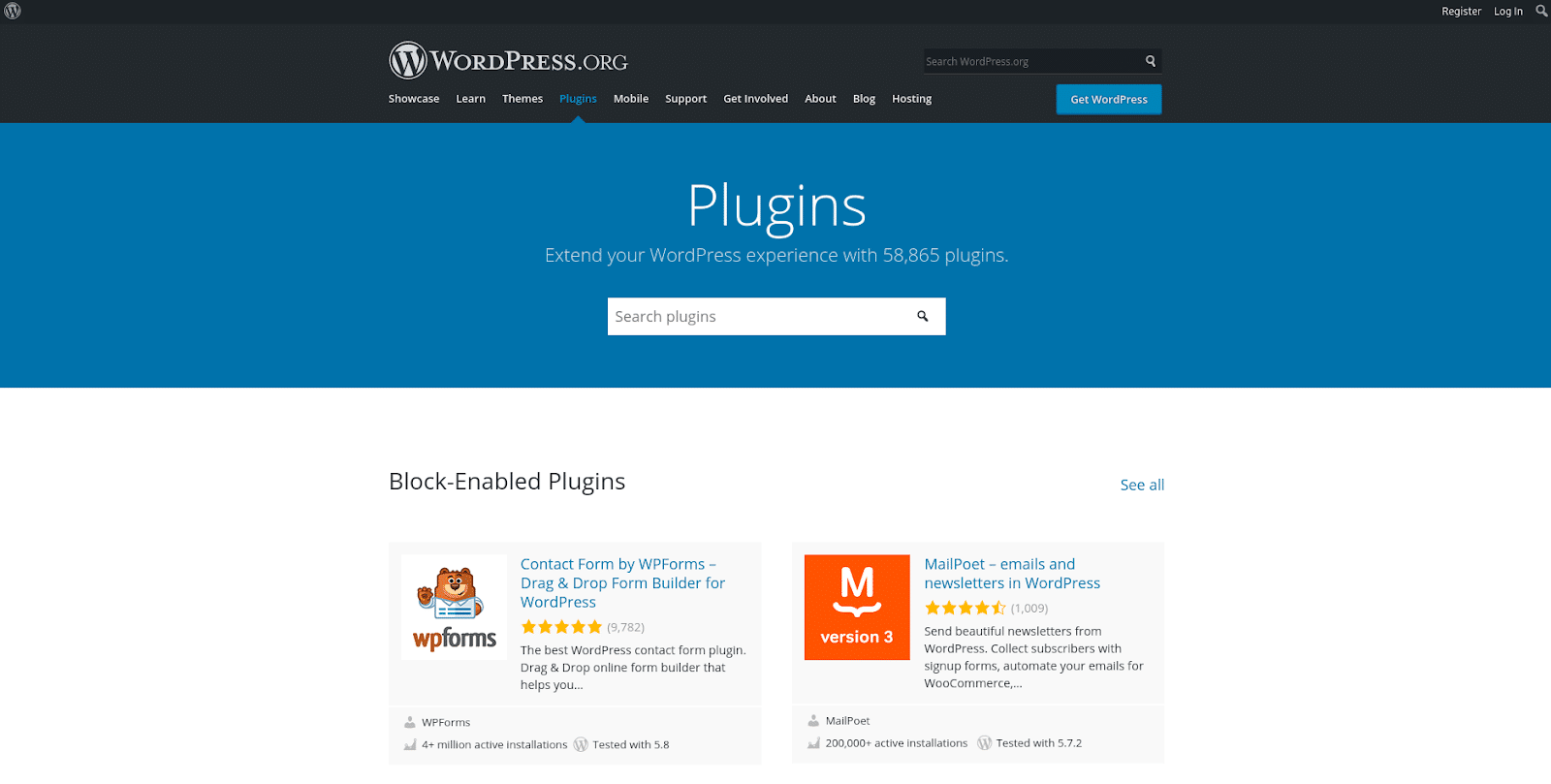
To list some of them:
- Yoast SEO: The most-used SEO plugin
- Elementor: A WordPress page builder plugin
- Ninja forms: A drag-and-drop form builder
- WooCommerce: For setting up an ecommerce shop with a few clicks
File Structure
The file structure of a web project is one of the most important (but often underestimated) elements to note when building something meaningful for the internet.
Let’s compare the Django vs WordPress file structures now.
Django File Structure
Django divides its structure between projects and apps. Simply put, a project is a collection of configurations and apps. An app is a web app capable of doing something — for instance, a blog app, poll app, or authentication process.
A project can contain multiple apps, and an app can be a part of numerous projects.
To create a Django project, make sure you have Python installed, and run the following commands in your terminal:
pip install django
django-admin startproject myproject
tree myproject/With the above commands, you install Django, start a project named “myproject,” and print its file structure:
myproject/
├── manage.py
└── myproject
├── asgi.py
├── __init__.py
├── settings.py
├── urls.py
└── wsgi.py
1 directory, 6 filesIf you elect to view the file structure with a proper file manager, you’ll see something like this:
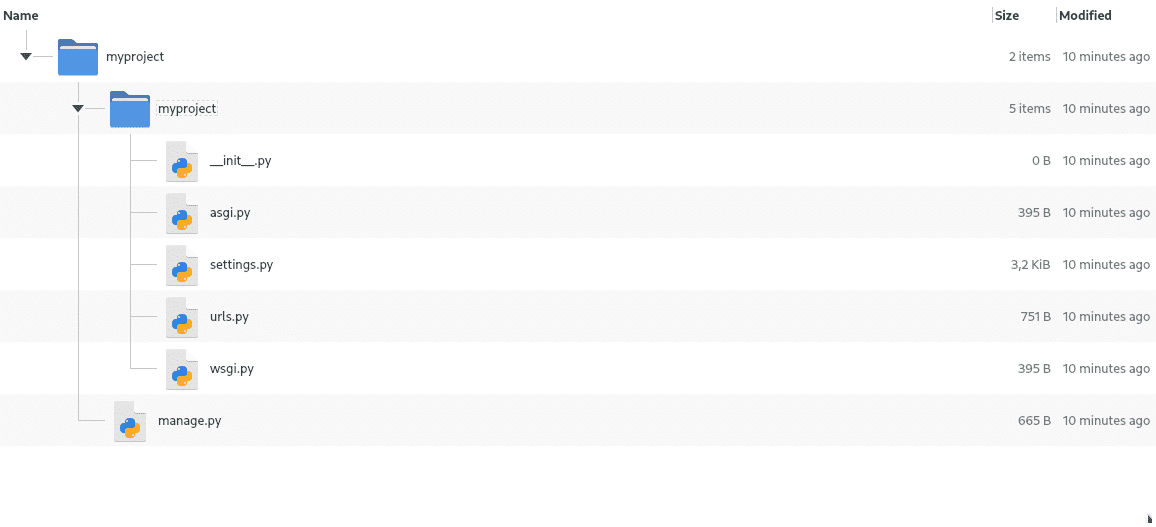
As you may appreciate, Django has a double folder structure, in which the “root folder” has another directory with the same name. That subfolder includes all the project’s configurations.
We won’t get into the purpose of each file inside a Django project, but you can check them out in the official tutorial.
Now, to create a Django app, you run the following command (make sure the directory you’re in contains the manage.py file):
cd myproject/
ls # check the manage.py file is there
python manage.py startapp myappThat will create a Django app named myapp. Let’s see what’s inside of that new folder:

As you can see, the structure of an app vs a project folder is quite different. Basically, an app folder contains its own configuration, a register of models (the Django way to design database tables), views to handle web requests and responses, and a URL dispatcher.
That’s all for Django! Let’s move on to WordPress’ file structure next.
WordPress File Structure
If you’re curious about WordPress’s file structure compared to Django’s, you’re in the right place. Let’s install WordPress locally to see what its file structure looks like.
Go to the WordPress download page and download the ZIP file:
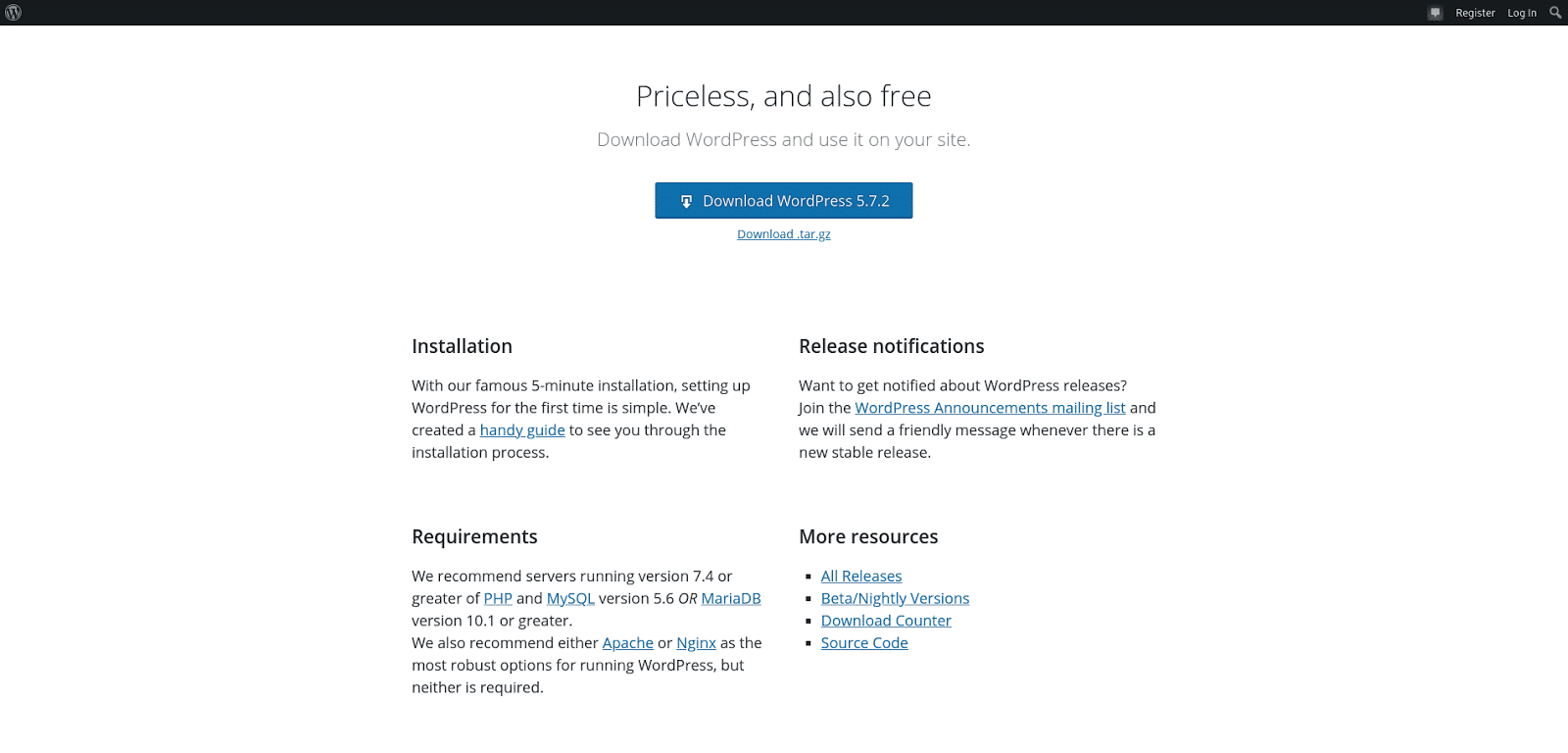
Extract the ZIP folder with a graphical file manager or another tool of your choice:
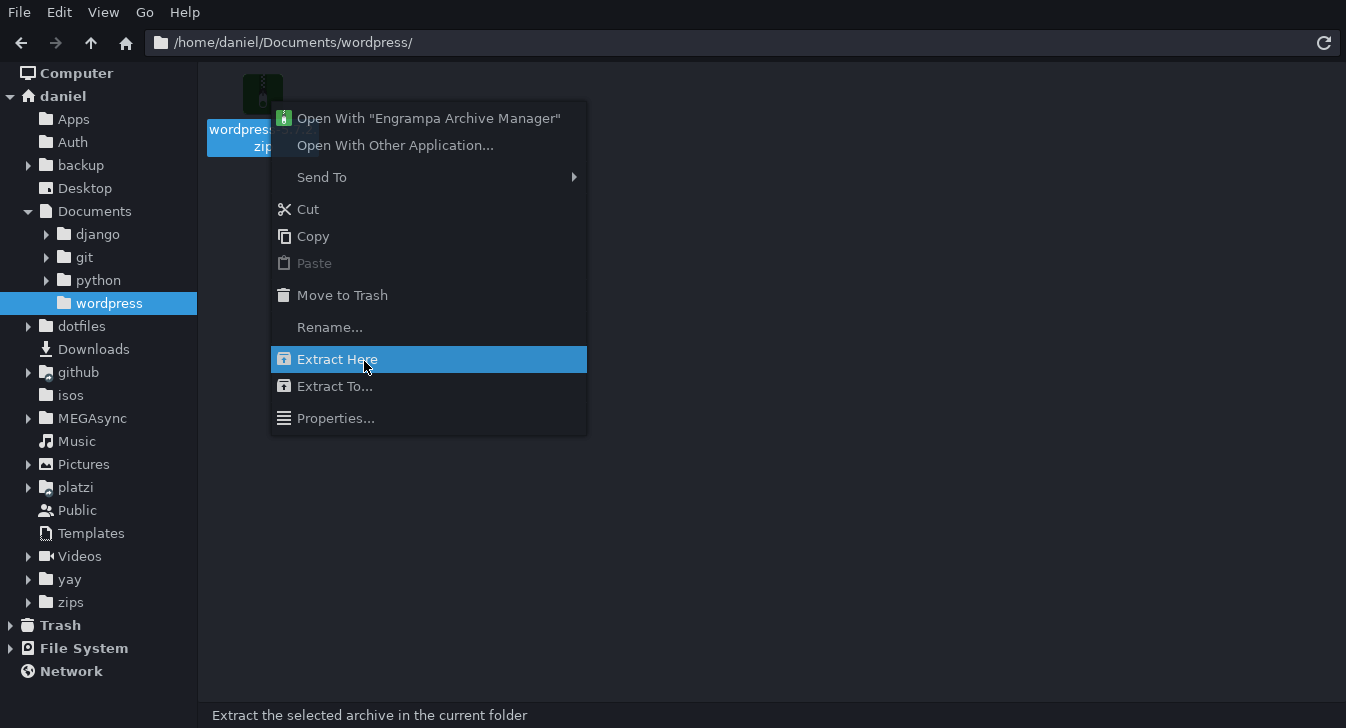
It’ll generate a folder named wordpress. Open this folder and take a look at the list of files it contains:
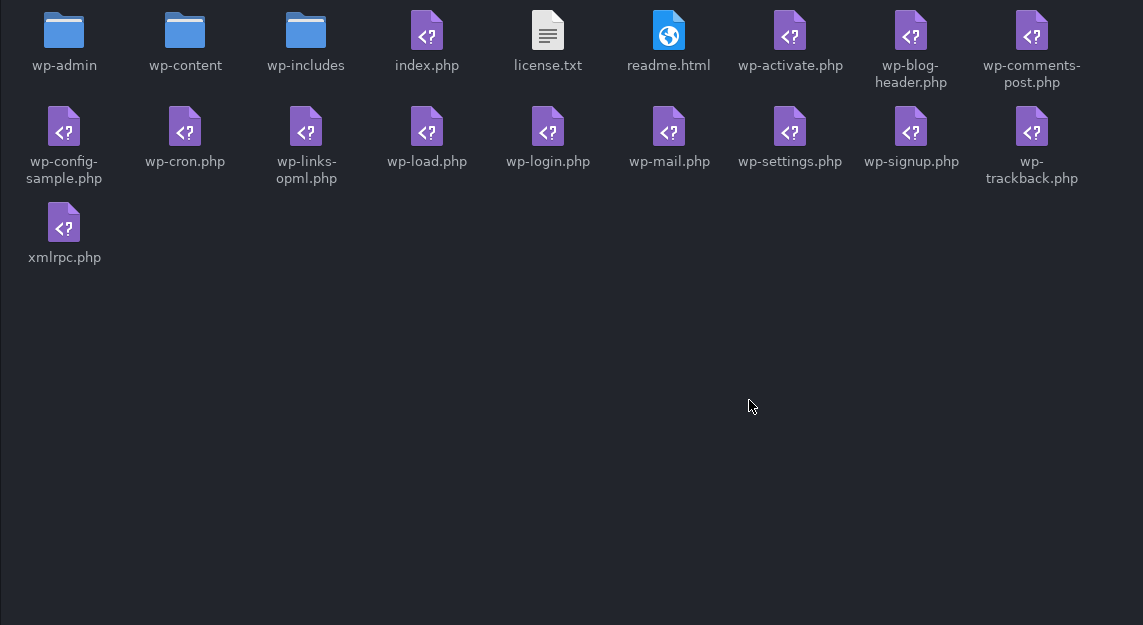
We’ve explained this more thoroughly in our guide to WordPress files, but as you may notice, there are many PHP files inside the WordPress file structure of a site. That’s because WordPress is essentially built with PHP.
Let’s see what the file structure would look like and compare it to Django:
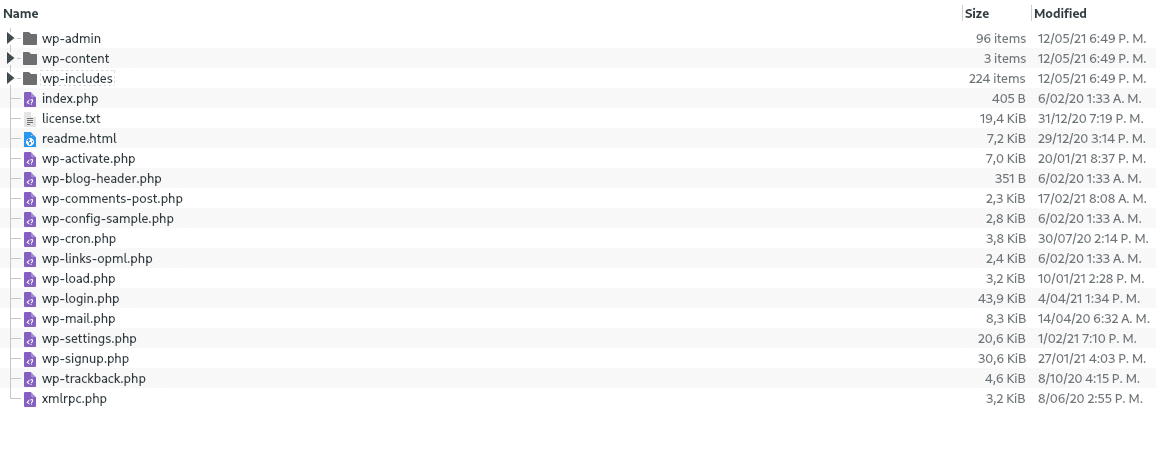
It’s impressive to see how elaborate the structure of a WordPress site is. And things get even more complex if you take a closer look at the subfolders wp-admin, wp-content, and wp-includes.
This approach isn’t that practical since you won’t be playing around with these files most of the time. However, it demonstrates that a CMS (WordPress, in this case) is much more “packed” than a web framework like Django.
Of course, with Django, your file structure can grow indefinitely because you can create as many apps — and add as many features — as you’d like. An app like Instagram contains over 10,000 tiny Django apps, but we’re comparing only the starting point for these technologies.
Another difference is the interaction with these file structures. In Django, you must use the terminal (which may seem scary if you’ve never used it), while with WordPress, the terminal is rarely needed. You can see, when it comes to Django vs WordPress, file structures are quite different.
Template Systems
We live in the age of dynamic websites. Most of the time, you don’t want to rely on static HTML, and that’s why modern technologies like WordPress or Django have templates to display data dynamically.
Django Template Language
Django has DTL (Django template language), which comprises text files (HTML, XML, CSV) that use a special syntax to tie certain logic into the user experience.
For example, if you want a copyright sign to include the current year without editing the site, you could utilize a Django template tag reflecting the year the user views the page.
Some features that DTL includes are:
- Variables
- Loops
- Dynamic tags
- Filters
- Comments syntax
- Template inheritance
- Automatic HTML escaping (extra protection against inline scripts)
WordPress Template Hierarchy
For sure, WordPress is a dynamic platform that avoids using static HTML files. It also comes with a built-in template system.
These templates are plain PHP files, and a structured set of templates result in a WordPress theme.
The main difference between Django template language and WordPress templates is that Django templates are written with their own syntax, which means you’re not writing a Python file, but using a text file with special components. On the other hand, WordPress templates are written in pure PHP.
We’ve made a complete guide on WordPress template hierarchy, so don’t forget to check it out!
Documentation
Both technologies have some of the most effective documentation on the internet.
Django documentation will guide from the installation process to the more advanced usages of this framework. You can find tutorials, topic guides, reference guides (technical overviews on Django’s features), and how-to guides.
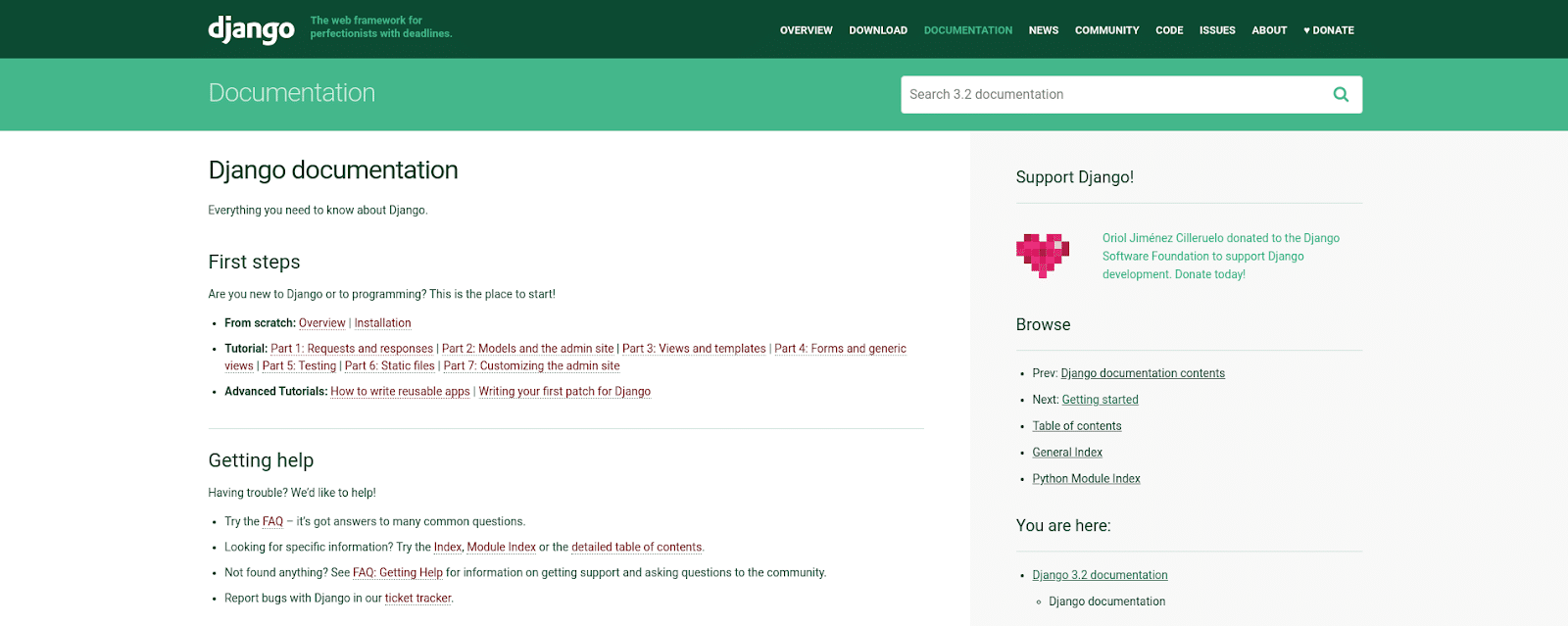
At the time of writing, Django documentation has been translated into 10 languages, with more to come.
On WordPress’ side, you have the WordPress codex, which includes most of the things you would need to get started building a WordPress website.
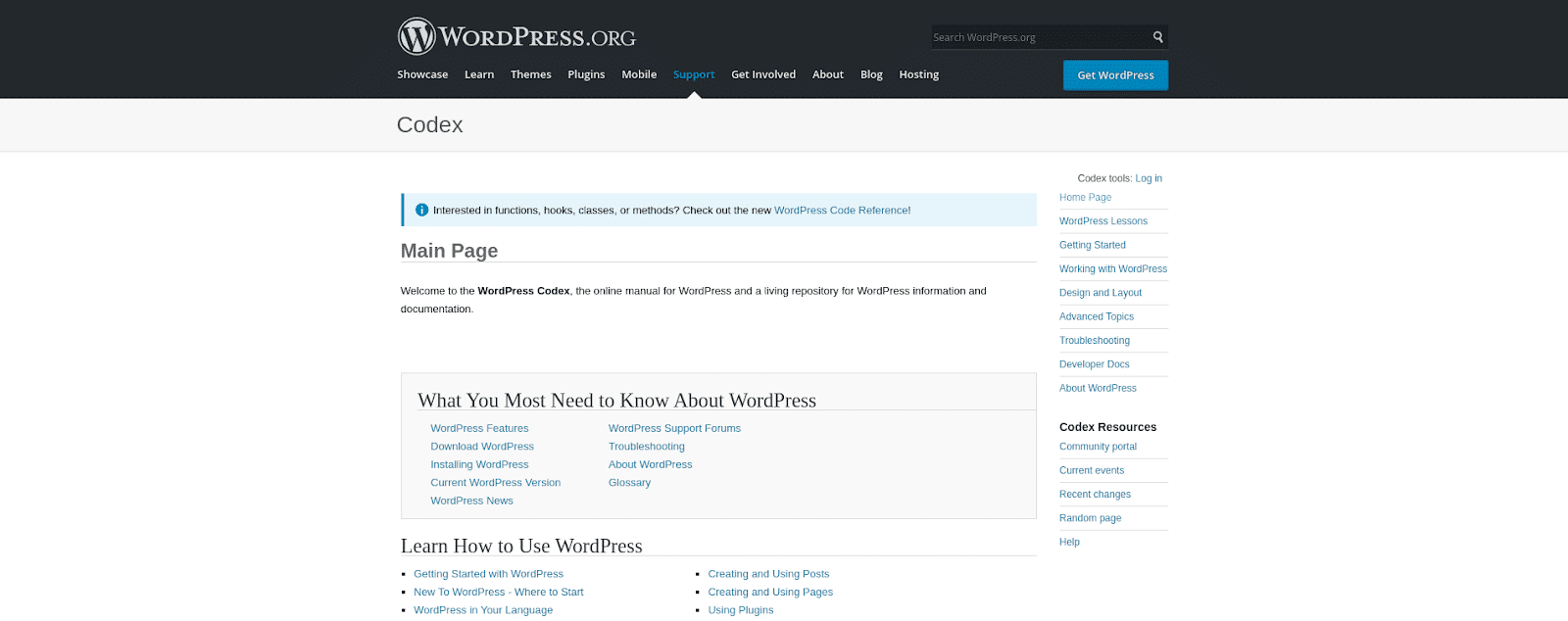
Currently, WordPress codex is translated into over 50 languages, which makes sense due to its global market share.
WordPress also boasts an extensive collection of developer resources to help when you’re in the weeds with a project.
Community
What would be a great technology without a supportive community backing it? Let’s take a peek at the different communities for Django and WordPress.
Django Communities
Django has a vast community of learners and professionals who will help you troubleshoot with this framework.
Django’s community page is a good place to start because it contains a valuable collection of links and resources.
There are additional subcommunities on sites like Reddit and Dev.to. It’s also worth mentioning StackOverflow’s Django tag.
If you want to attend Django conferences, you can go to the annual DjangoCon. Unfortunately, it’s only available in the US and Europe, but you can look for a smaller local conference, or organize one yourself.
Last but not least, the nonprofit organization Django Girls is doing a great job of empowering women by teaching them how to use Django, Python, HTML, and CSS.
WordPress Communities
It’s normal to assume that WordPress has a bigger community because of its massive usage.
You can find hundreds upon hundreds of WordPress groups and communities on the internet, but we’ll mention only the most prominent ones for practical purposes.
WordCamp is the most prominent conference organizer for WordPress conferences worldwide. No matter where you are, it’s likely that you have a WordCamp conference near you.

The official Make WordPress Communities site also organizes in-person and online community meetups. They even have an official Slack chat to talk about contributions (code, design, documentation, etc.) to the WordPress project.
The Dev.to WordPress community has over 1,200 posts, and StackOverflow has a reserved tag for WordPress troubleshooting.
One impressive thing about these WordPress communities is that they create free plugins and themes for all WordPress users. It’s similar to the packages Django offers through PyPI.
To wrap up, both technologies have a great community, and you won’t struggle to meet people and talk about Django or WordPress. That said, there are more WordPress conferences spread across the globe than Django, thanks to the popularity of WordCamp.
Hosting Options
Why would you build a website if no one can access it? That’s why you need to have crystal clear options to deploy and host your site.
Django Hosting
Django has a wide variety of hosting options, but in general, you need skills in deploying with WSGI or ASGI. Another thing to consider is that Django can’t handle static files (CSS, JS, images) by itself, so you need a separate service to manage them.
Some options you can use are:
- Dedicated ready-to-use PaaS (Platform as a Service): You don’t have to configure the server by hand. Just include minimal configuration into your project, and you’ll be ready to go.
- Install directly on a Linux server or VM: You manage dependencies and configure web server software like NGINX or Apache in a Linux server or virtual machine (e.g. AWS EC2).
- Use Docker on a Linux server: Like the previous option, you manage all dependencies and configuration through Docker.
- Deploying on serverless infrastructure: Nowadays, you can deploy Django serverless with custom backends (e.g. AWS Lambda).
One drawback about Django hosting is the cost — often, you’ll need to pay a higher amount for a Django site running live than for a WordPress instance.
Django is meant to build more powerful apps in which the users have a high level of interaction and, as a result, many more web requests than an average WordPress site.
Taking this into account, if you anticipate getting less than 1,000 visits per day and your Django app is well optimized, you can expect to be paying somewhere from $5 to $25 USD per month.
WordPress Hosting
The number of options available to host WordPress can be overwhelming.
Any Linux server with PHP, MySQL, HTTP support, and Apache or NGINX installed will do the trick.
However, why would you configure a server by hand to host WordPress? The primary purpose of this CMS is to launch any kind of website as soon as possible.
That’s why most of the time, you would use WordPress-specific hosting — which is nothing more than hosting optimized to meet all WordPress requirements — so you can focus on the important stuff.
When referring to dedicated WordPress hosting, we have two options: shared hosting and managed hosting. Let’s review the meaning of each of them:
- Shared hosting: Your site will “share” a server with other WordPress instances, which, in general, means it’ll have worse performance, along with potentially unhelpful support and more problems. However, shared hosting can be a good option if you’re just starting since it’ll be much cheaper ($3–$25 per month).
- Managed hosting: This is like renting a house instead of an apartment. You’ll get a dedicated server for your WordPress site(s) along with better performance and high-quality support. If you’re an experienced WP developer managing multiple sites or a medium-sized business, you should opt for managed hosting, for which you’ll pay anywhere between $25 and $150 per month.
Similarities
Let’s review some of the key similarities between Django and WordPress:
- Free and open-source software
- Capable of building most kinds of websites
- Multilingual support
- Used by world-class organizations
- An impressive amount of third-party tools
- Scalable and flexible file structure
- Easy yet powerful template system
- Extensive documentation
- Great community
- Several hosting options
Differences
Although there are many similarities between Django and WordPress, differences are the pivot point when selecting one technology.
| Django | WordPress |
|---|---|
| Backend web framework | Content management system (CMS) |
| Written in Python | Written in PHP |
| Supports multiple databases: PostgreSQL, MariaDB, MySQL, Oracle, SQLite, and more with third-party backends | Only supports MySQL and MariaDB |
| Started as a newspaper solution in 2005 | Started as a blogging platform in 2003 |
| Python and Linux knowledge needed to create a site | Coding skills are not required to get started, but knowing basic HTML, CSS, and PHP helps |
| Start each project from scratch | Utilize ready-to-use tools to manage content |
| Lower market share | Runs 40% of the web |
| More development planning and time needed (but still a rapid development framework) | Made to build websites in a short time |
| Must code the frontend by hand | Themes with one-click install available |
| No SEO features included by default | Built-in SEO features |
Other CMS Options You Can Explore
Both Django and WordPress have become so popular that “child” CMSs have been born based on the two popular platforms. These are branched versions of Django vs WordPress that seek to offer something the original CMS doesn’t.
Django vs WordPress
As a web framework, Django is capable of building additional CMSs. Django CMS is a content management system made on top of Django with developers and content editors in mind.
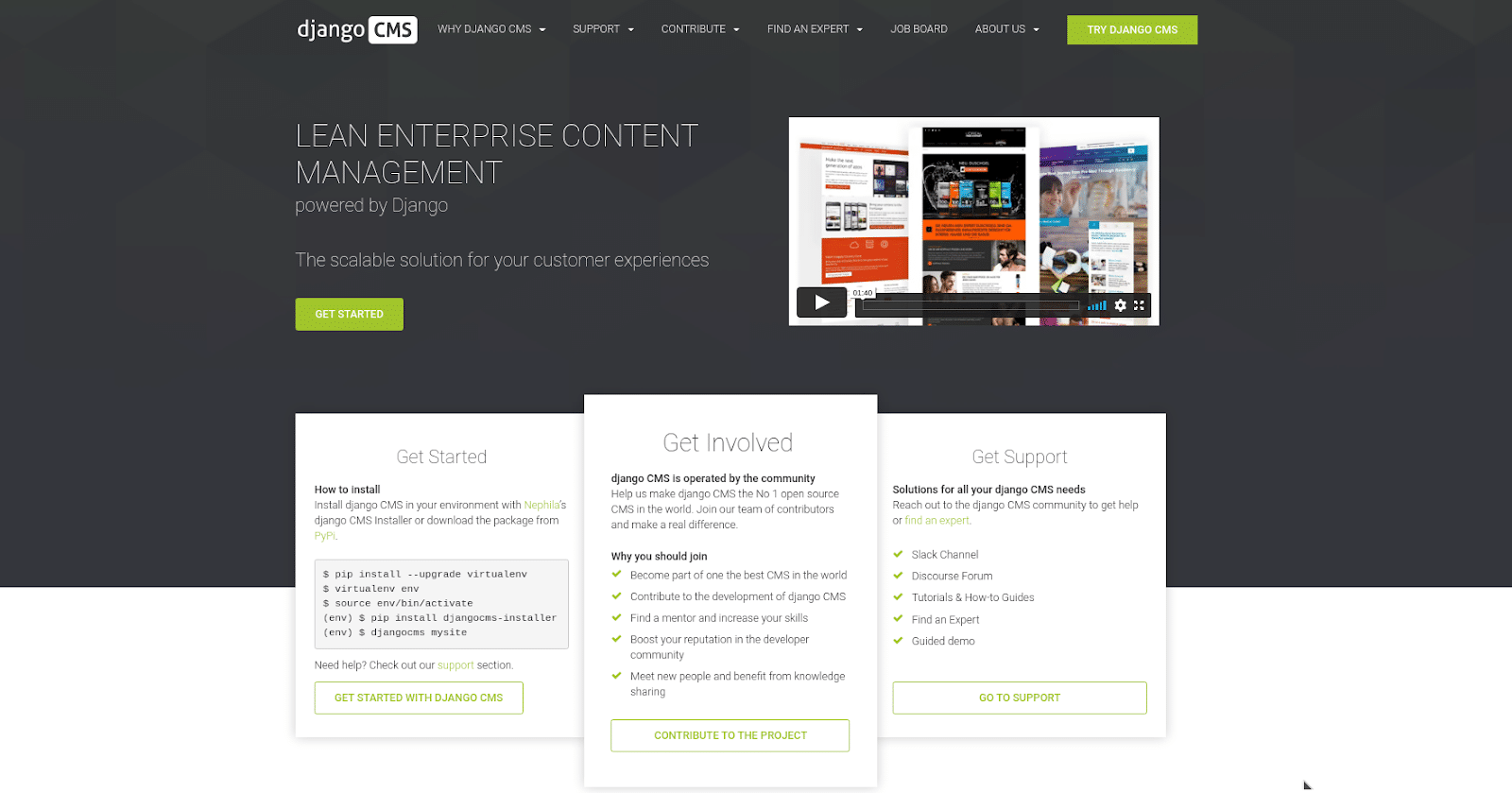
It’s free and open-source, has excellent documentation, and has a growing community.
Django CMS is a perfect option if you need a CMS but want to keep Django’s features.
Wagtail CMS vs WordPress
Wagtail is another CMS built on top of Django. It has a beautiful interface and can connect to other Django apps you’re already developing.
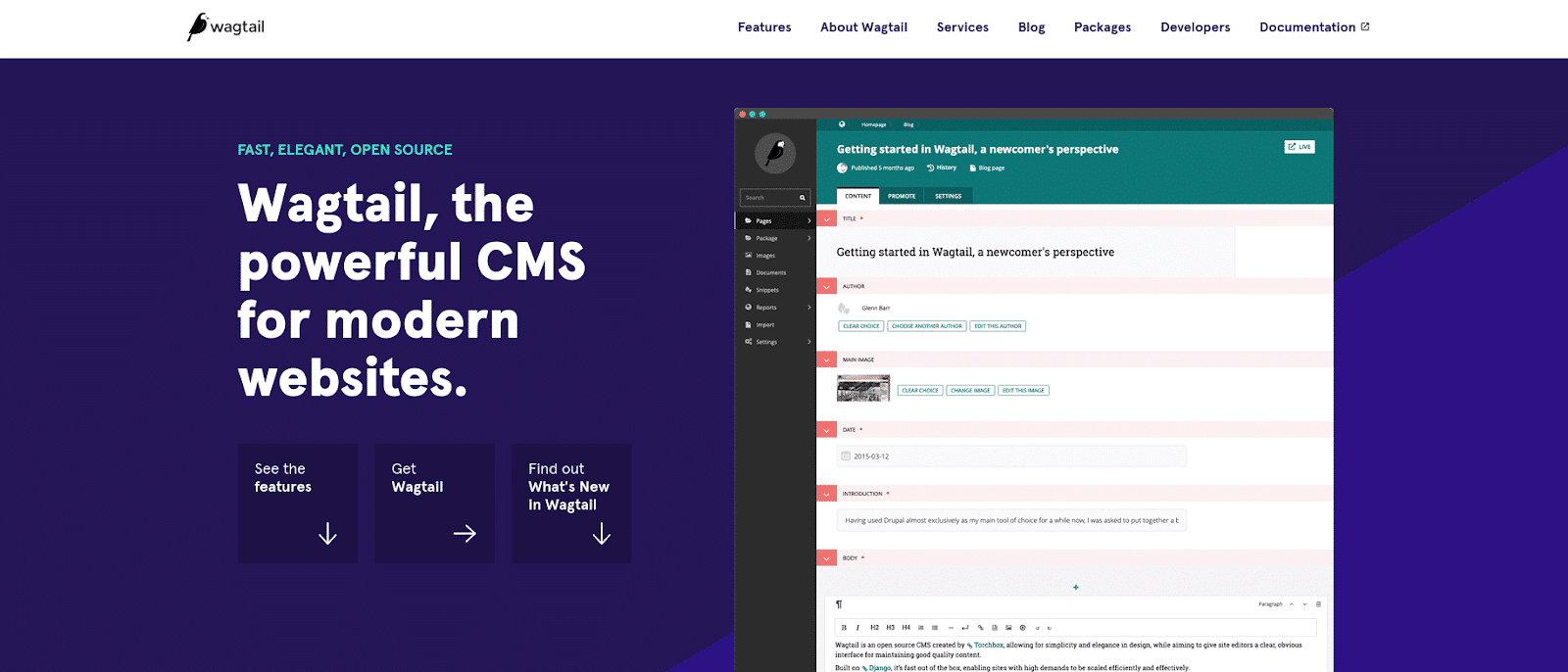
Same story: If you want complete control of your codebase and don’t want to lose all Django’s features, Wagtail can probably fill your needs.
Summary
Django and WordPress have become technologies capable of building any type of website. You can hardly go wrong with either, but there are some benefits and downsides to each that you should consider before making your decision.
Django is the better option for you if:
- Your project has many requirements for custom features or API connections
- Your project focuses on user interaction (users will be actively using your site instead of passively reading it)
- Tasks automation is a priority
- You want to improve your programming skills while building a website
- You want absolute control over your whole website
WordPress might fit your needs better if:
- You need a personal website, portfolio, or blog
- You’re developing a simple site for a local business
- Time is a top priority
- You don’t know how to code yet
- Your site doesn’t have a complex permissions system (WordPress will handle it easily)
- You want SEO features out of the box
Here at Kinsta, we’re obviously fans of WordPress, but everyone’s needs are different.
Do you have any questions left about Django vs WordPress? Let us know in the comments section!


